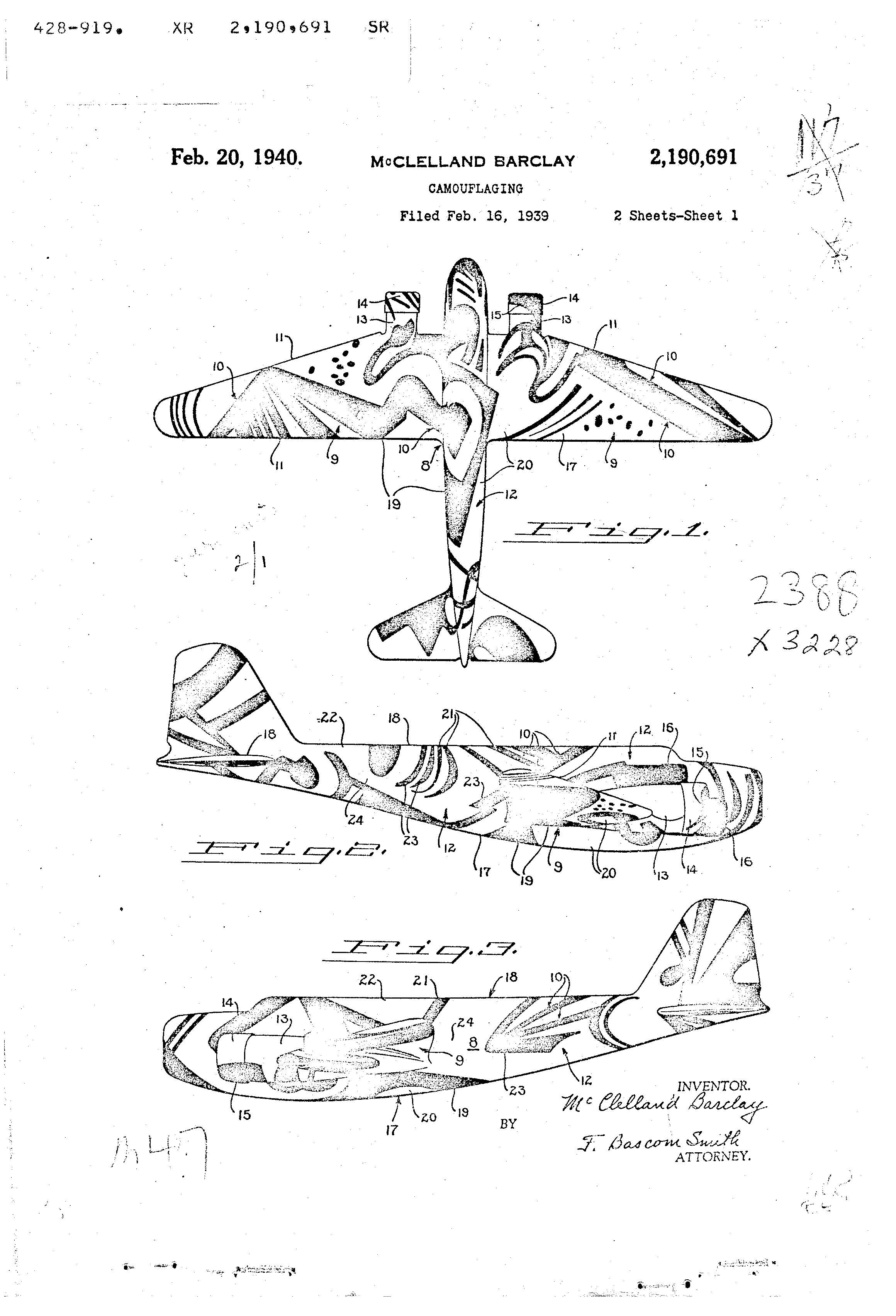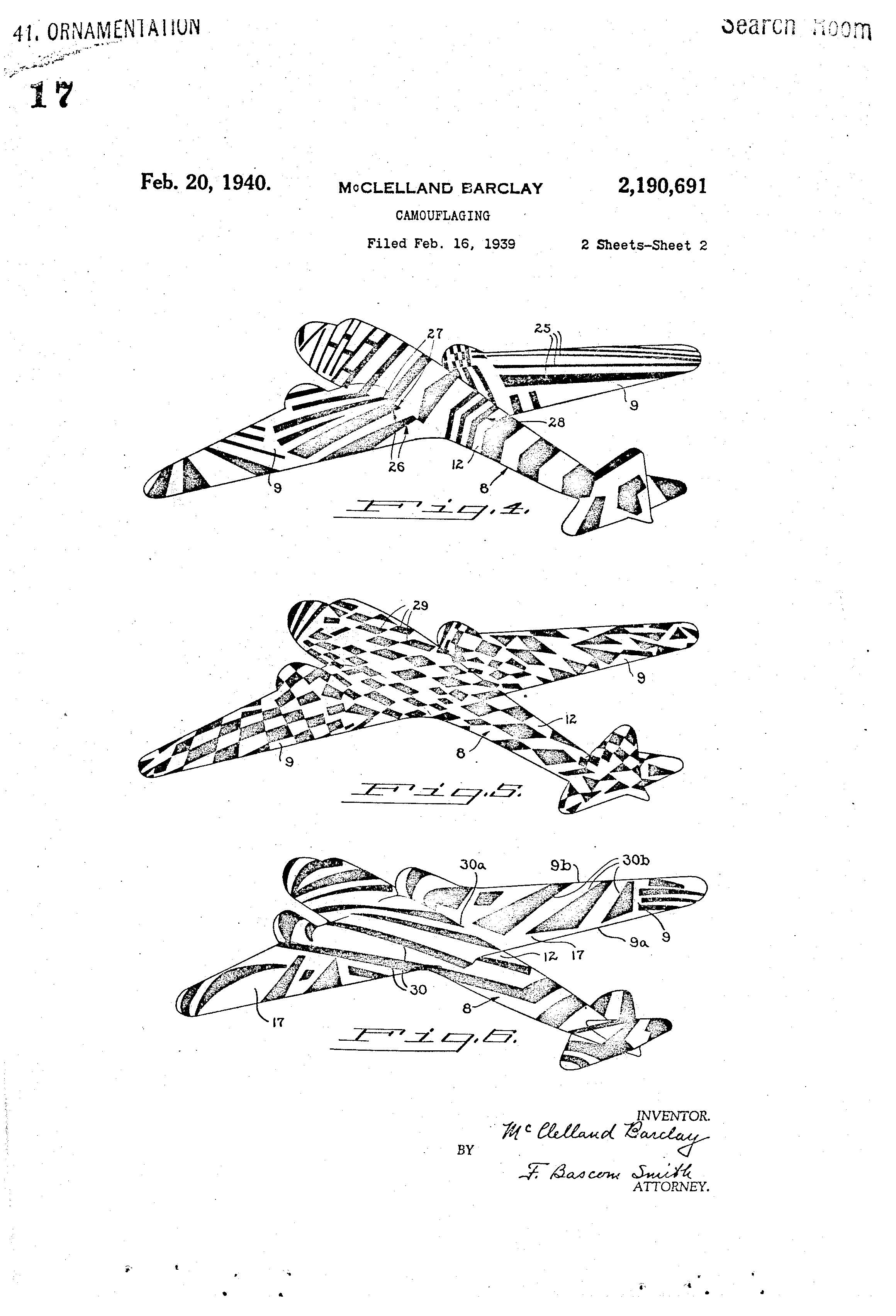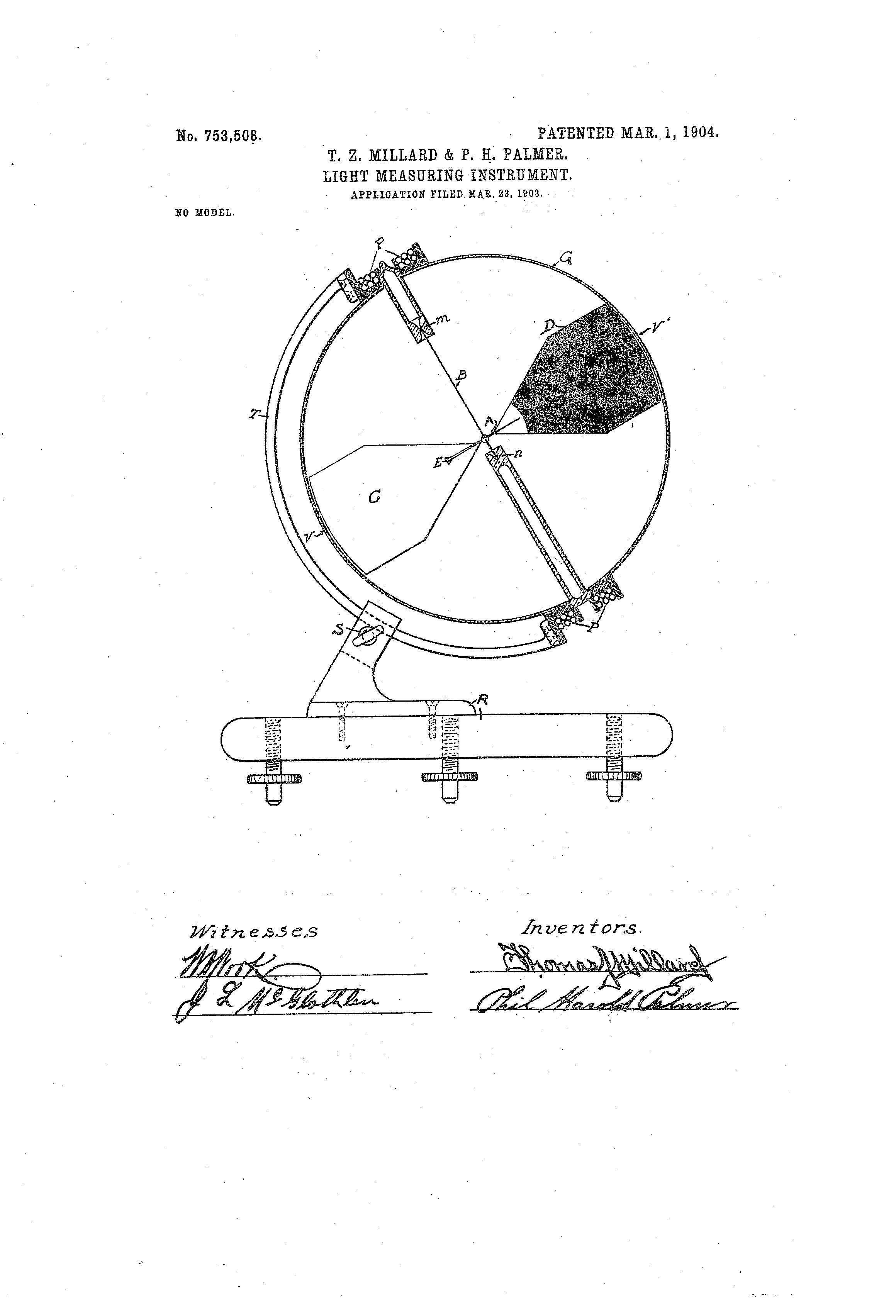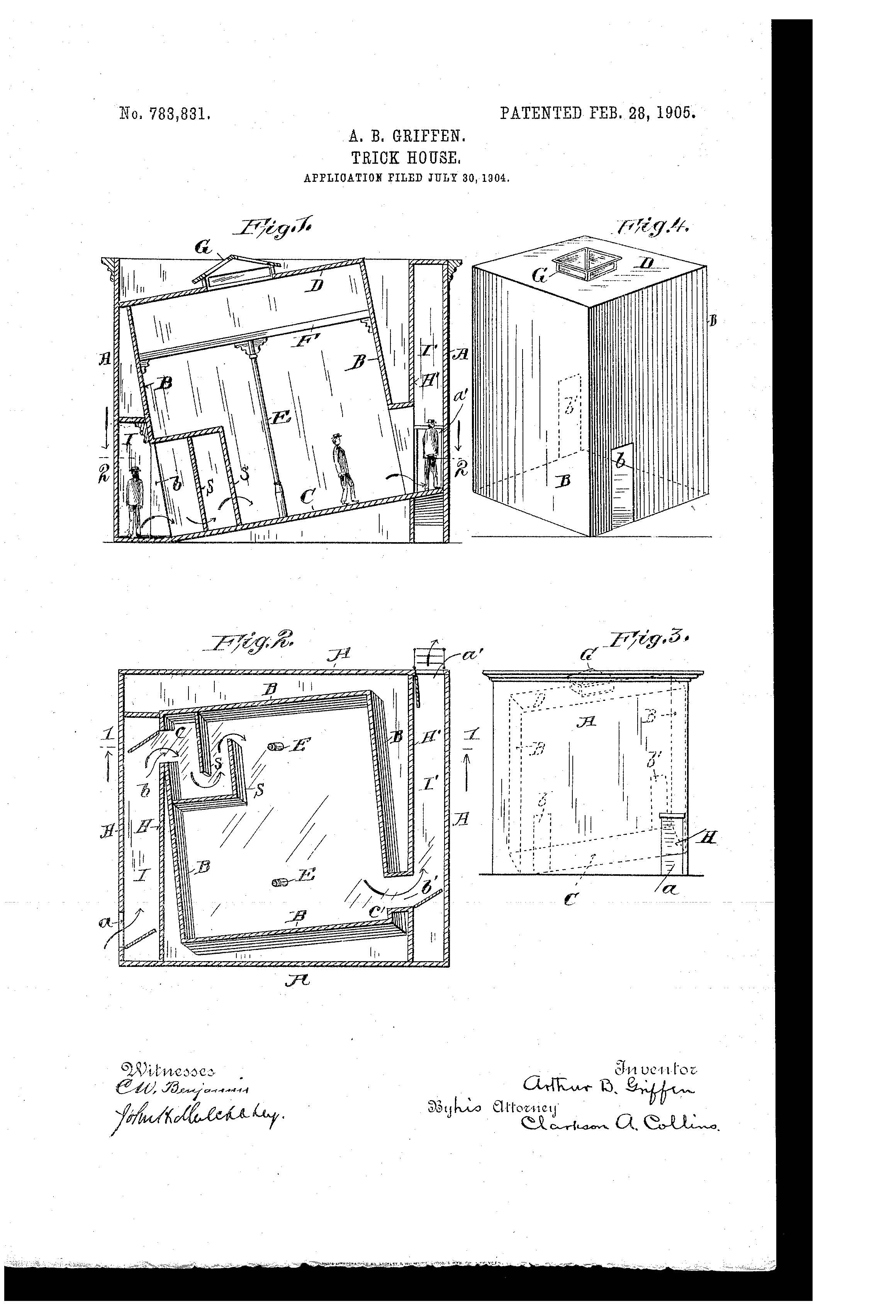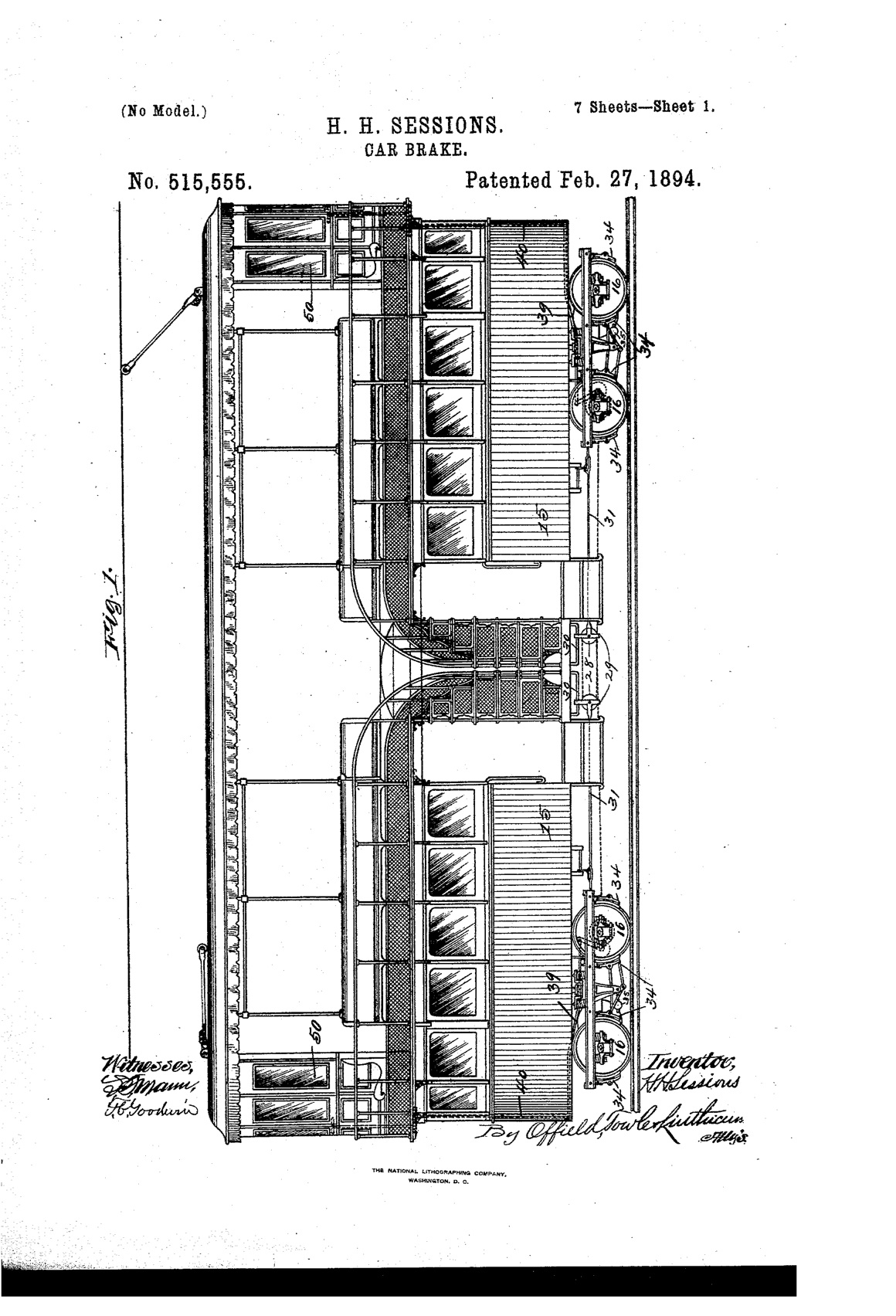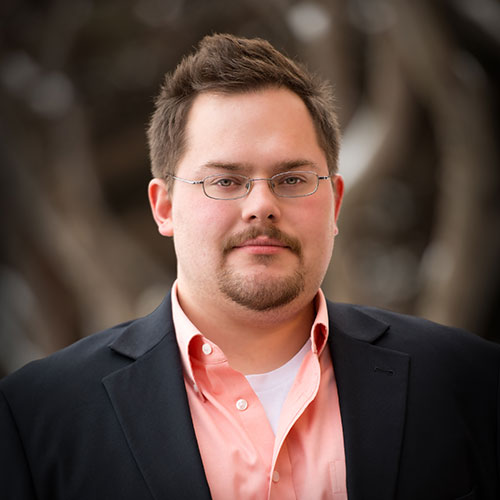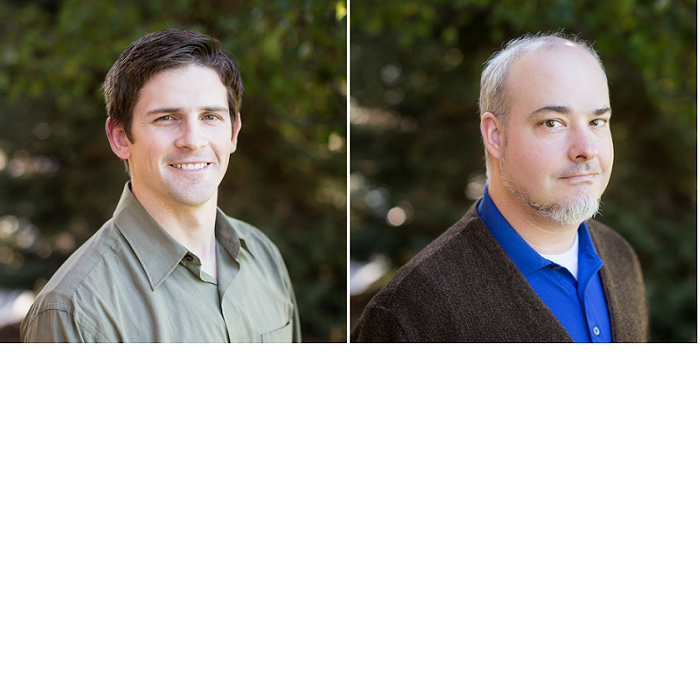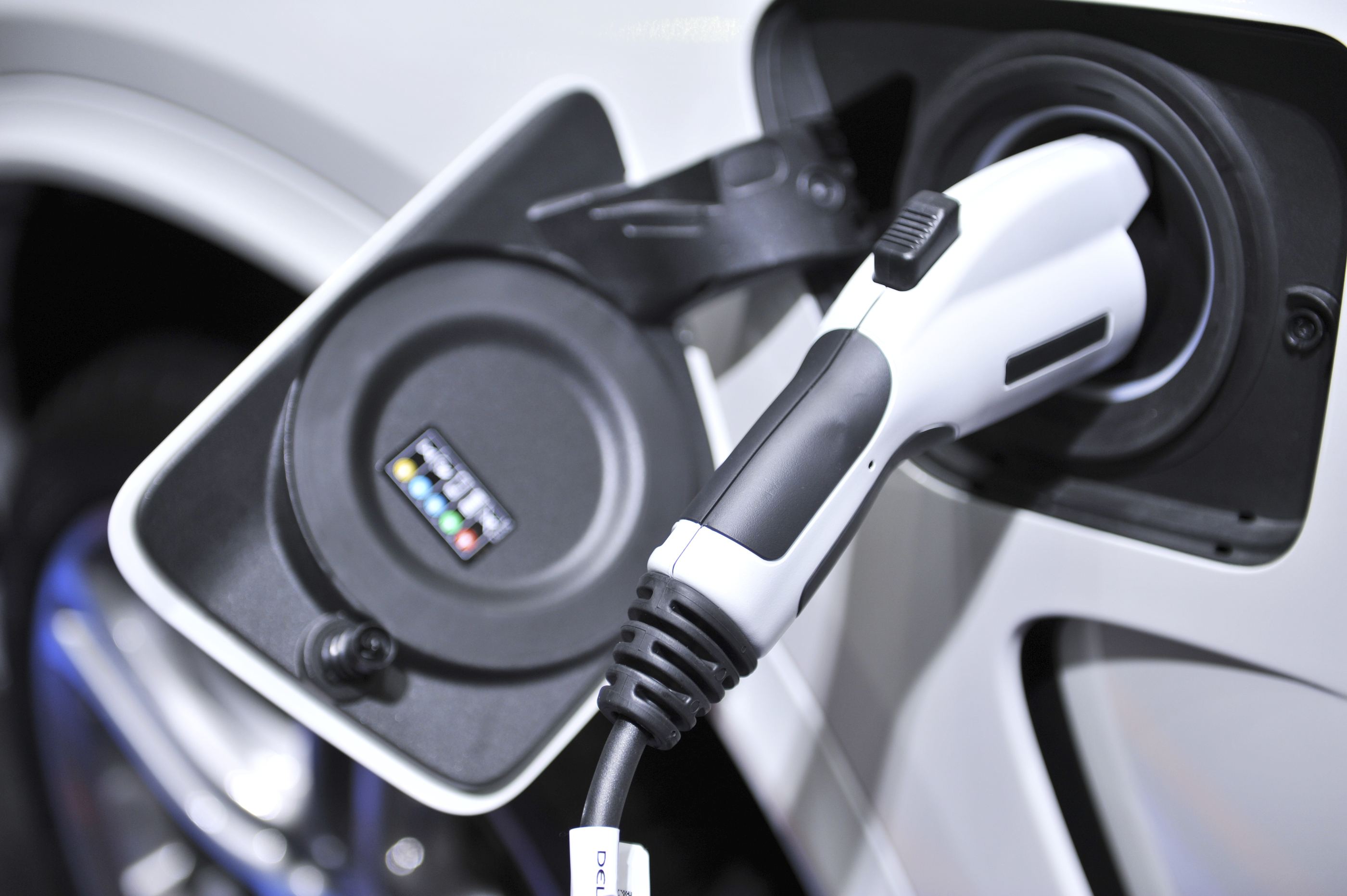Patent of the Day: Light Measuring Instrument
Suiter Swantz IP takes a look back at past inventions and inventors with our Patent Of The Day.
On this day in 1904, Thomas Z. Millard and Phil Harold Palmer were granted U.S. Patent No. 753,508 for a LIGHT MEASURING INSTRUMENT.
The object of this invention is to obtain a photometer that will directly indicate the intensity of light transmitted to it and also to directly indicate the relation of the intensity of light emitted from an electric lamp to the current consumed by said lamp. This is attained by applying a retarding force or retarding forces to the rotation of the vane in an ordinary radiometer in such a manner that the vane instead of revolving completely around its axis will move through an angle the greatness of which depends upon the intensity of light striking the vane. Thus the intensity of said light is directly indicated upon a scale calibrated along said angle.
Suiter Swantz IP is a full-service intellectual property law firm serving all of Nebraska, Iowa and South Dakota. If you have any intellectual property questions or need assistance with any patent, trademark or copyright matters and would like to speak to one of our patent attorneys please feel free to contact us.

Patent of the Day: Trick House
Suiter Swantz IP takes a look back at past inventions and inventors with our Patent Of The Day.
On this day in 1905, Arthur B. Griffin was granted U.S. Patent No. 783,831 for a TRICK HOUSE.
The object of this invention is to provide a means of amusement, recreation, and instruction.
The operation of this invention is based, of the unconscious adaptation of the muscular movements of the body to the physical conditions under which one believes one's self to be acting.
In carrying this invention into effect the house is constructed having having outer walls which are perpendicular or at right angles with the place of the horizon in the usual manner. Within these outer walls a room or rooms, the floors of which are sloping - i.e., form an angle with the plane of the horizon. The ceilings of such room or rooms are parallel with the floor. The walls of the room or rooms are at right angles to the floor, and the rooms are preferably provided with natural accessories - such as supporting-posts, window-frames, and such other articles as maybe desired - which are also at right angles with the floor. Entrance to and exit from the room is effected by means of a passage or passages within the outer walls of the house and doors so arranged that no view can be had from the inner room of objects exterior thereto nor of the interior of the room from without. For this purpose also the room is lighted by day by means of a skylight placed in the ceiling instead of by windows in the walls, so that there is no opportunity to compare the position of the room with external objects. The result of this construction is that to a person entering the room the floor appears to be level and the walls perpendicular, as in an ordinary room. Consequently the movements of a person walking in the room are based on the assumption of this condition, with the amusing and puzzling result that when a person attempts to walk from one part of the room to another he will invariably find himself without apparent cause arriving at a different point from that aimed at or compelled to exert a considerable sidewise or turning effort to enable him to reach the desired point.
Suiter Swantz IP is a full-service intellectual property law firm serving all of Nebraska, Iowa and South Dakota. If you have any intellectual property questions or need assistance with any patent, trademark or copyright matters and would like to speak to one of our patent attorneys please feel free to contact us.

Patent of the Day: Car Brake
Suiter Swantz IP takes a look back at past inventions and inventors with our Patent Of The Day.
On this day in 1895, Howard H. Sessions was granted U.S. Patent No. 515,555 for a CAR BRAKE.
This invention relates to certain improvements in car brakes; and the object of this invention is to provide a powerful brake which can be applied without injurious shock or jar from either end of the car, and so constructed that if one or more of the parts break, the uninjured parts will still be effective to stop the car or train.
The improvements relate more particularly to the brake gear, said gear of being of that class generally designated "friction gear"and comprising in this improved construction two disks fixed upon the axle of the car truck and two disks loosely mounted and capable of sliding thereon, the sliding disks being moved by forcing between them a wedgeface disk, the later being mounted so as to swing on a horizontal axis and which may be actuated either by hand or by power, but a special construction has been provided of operating mechanism for applying the brake from a cab on the car roof. The trucks at each end of the car are preferably provided with friction gear and connect the gearing at opposite ends of the car by a chain, cable or other flexible connecting means which shall be adapted to be taken up and paid out by the setting or releasing of the brakes, said chain being connected with and adapted to move the brakes so as to force them against the wheels, their release being effected, preferably, by weight normally tending to move them away from the wheels. Of course the several cars of the train may have their brakes connected so that the application of the brake upon one car shall set all of those upon the train.
Suiter Swantz IP is a full-service intellectual property law firm serving all of Nebraska, Iowa and South Dakota. If you have any intellectual property questions or need assistance with any patent, trademark or copyright matters and would like to speak to one of our patent attorneys please feel free to contact us.







Patent of the Day: Snow Plow
Suiter Swantz IP takes a look back at past inventions and inventors with our Patent Of The Day.
On this day in 1903, James W. Russell was granted U.S. Patent No. 721,241 for a SNOW PLOW.
My invention relates to snow-plows for railways; and its object is the effecting of the improvements briefly enumerated as follows: first, to means for simplifying, improving, and cheapening the construction of the wings of the snow-plow for enabling the snow to be better delivered from the wings and preventing the same from being deposited upon the rear or cab roof or falling back upon the track, for strengthening the pivotal support of the wings, for so arranging and constructing the wing-operating mechanism as to provide room in the cab for the introduction of flanger-operating mechanism and to give a central passage for the men from end to end within the plow, and also for so improving the wing-operating mechanism as to permit it to be more easily and quickly manipulated and so as to prevent accident to wing or plow in case of excessive pressure against the wing when in use; second, to improvements in the hooding or fender at the top of the nose of the plow for adapting it to more readily" clear itself of the snow which might otherwise pack beneath it and to means whereby any undue excess of pressure shall simply break the fastenings of the fender-extension plate and dislodge it instead of buckling and destroying the hooding or fender itself; third, to improvements in the power-bar for giving it increased rigidity and strength and for providing it with an automatic coupler; fourth, to an improved draw-bar for enabling the plow to be coupled behind an engine or as apart of a freight train in being transported from one point to another; fifth, to means for enabling a flanger to be combined with a wing snow-plow and to improvements in the construction of the flanger itself and in the flanger - operating mechanism; sixth, to improvements in the side cutters of the plow and to means for strengthening and bracing the hanging sides or guards of the plow; seventh, to certain imitation of one-half of said flanger improvements.
Suiter Swantz IP is a full-service intellectual property law firm serving all of Nebraska, Iowa and South Dakota. If you have any intellectual property questions or need assistance with any patent, trademark or copyright matters and would like to speak to one of our patent attorneys please feel free to contact us.
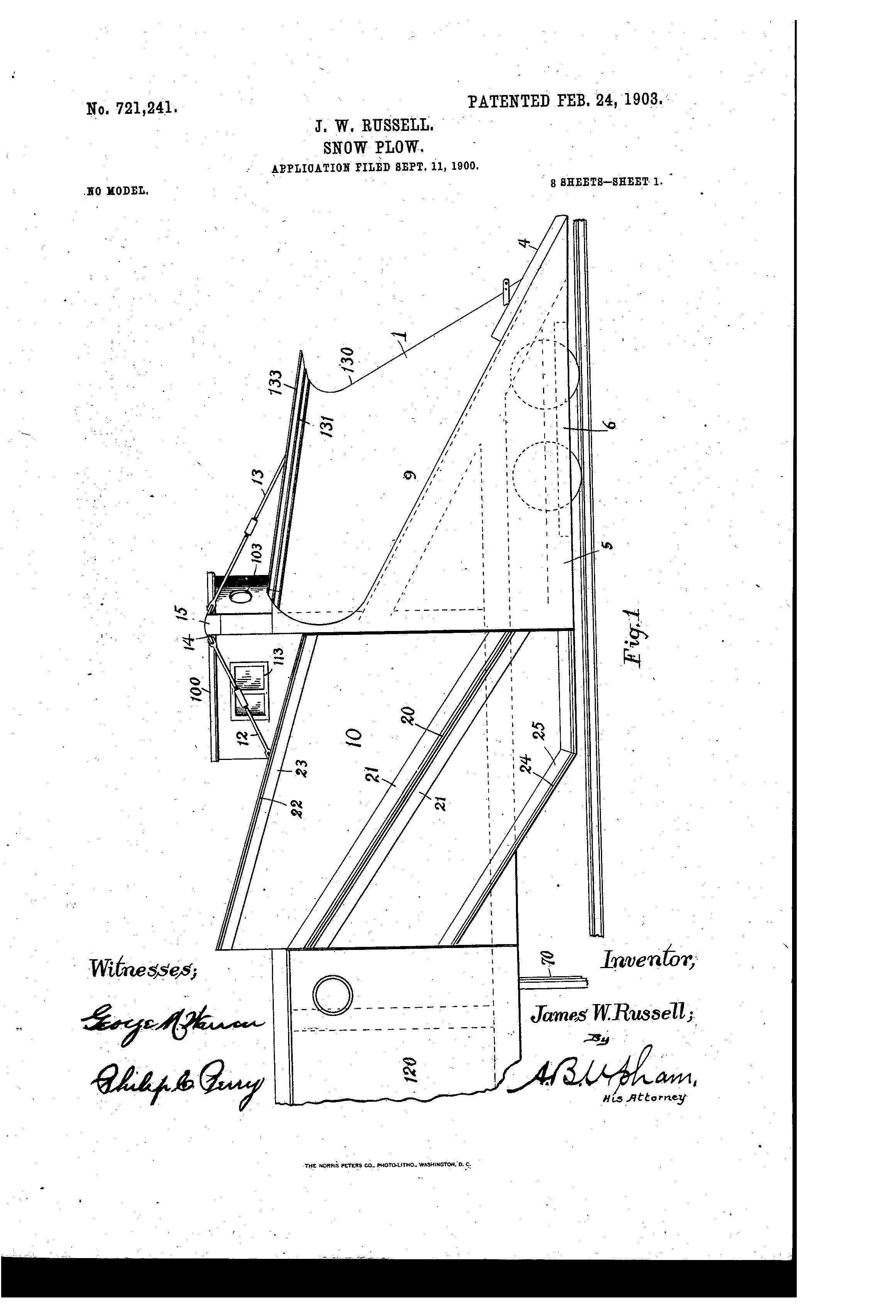
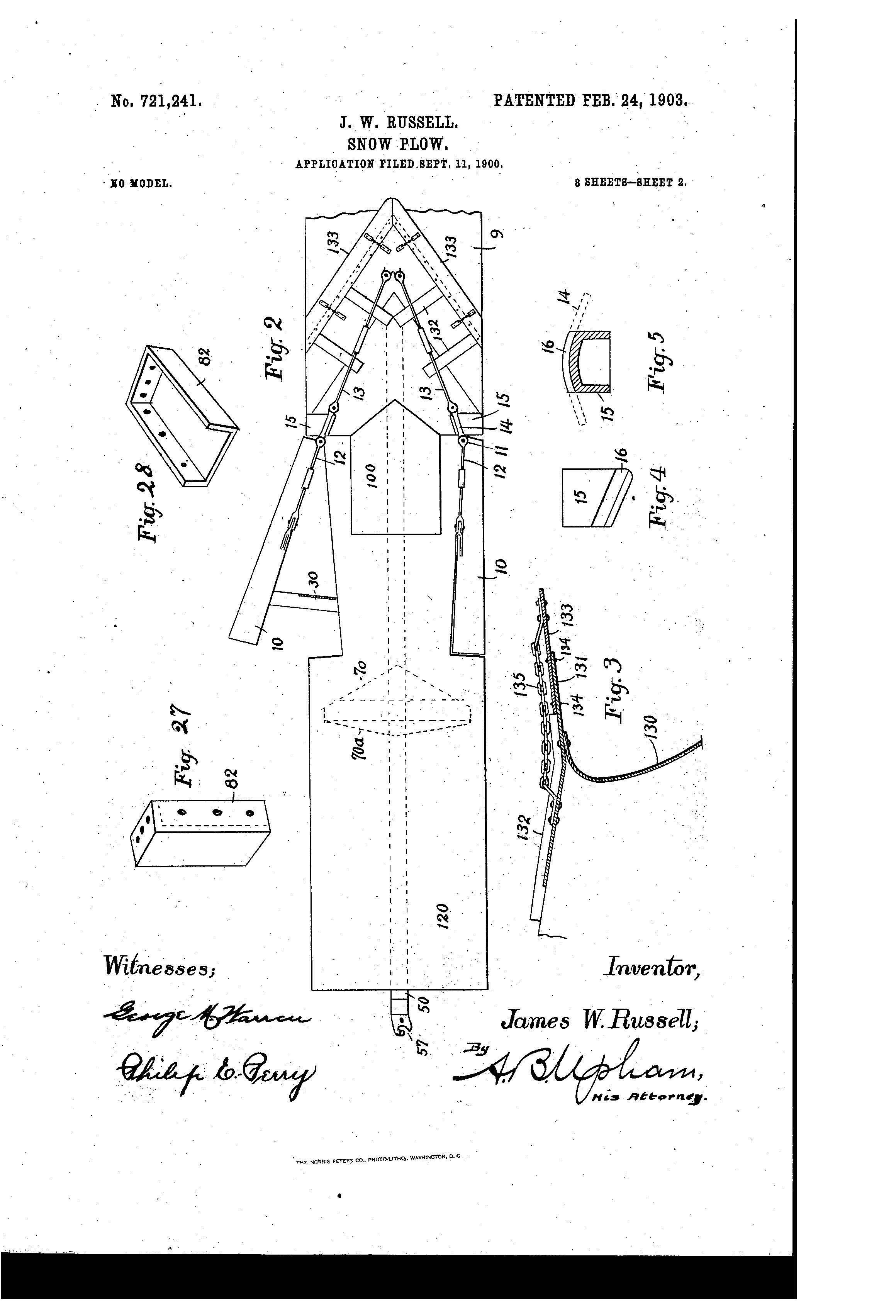
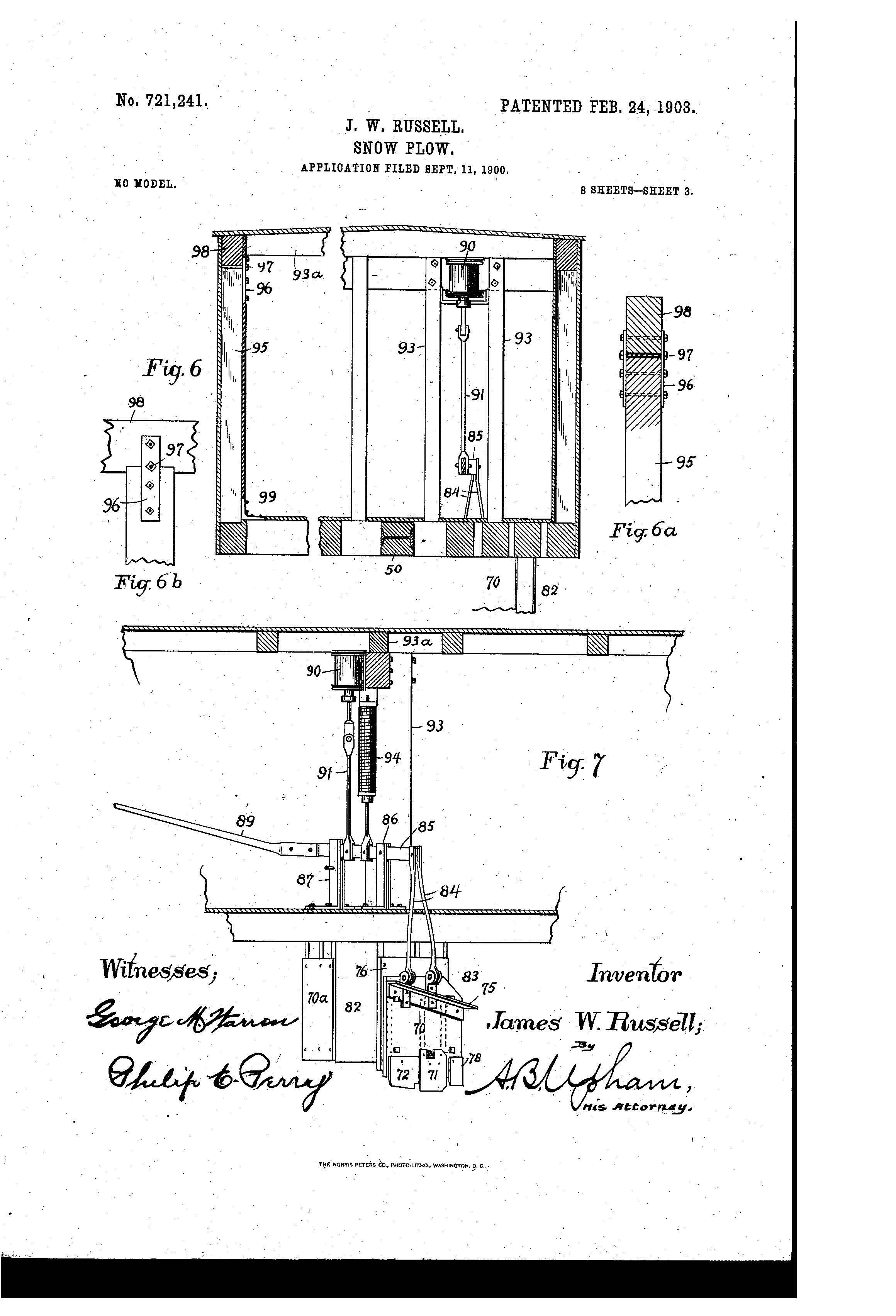
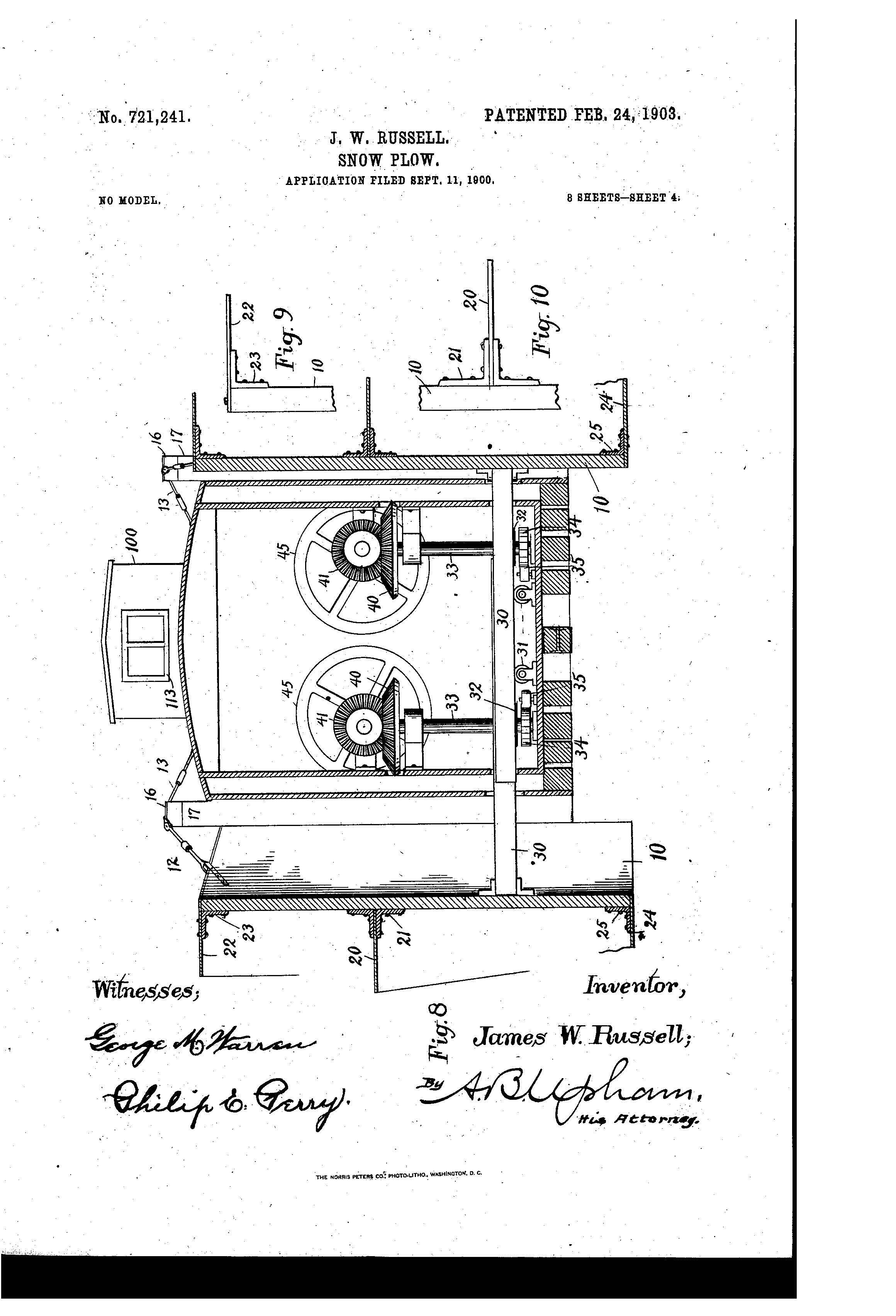
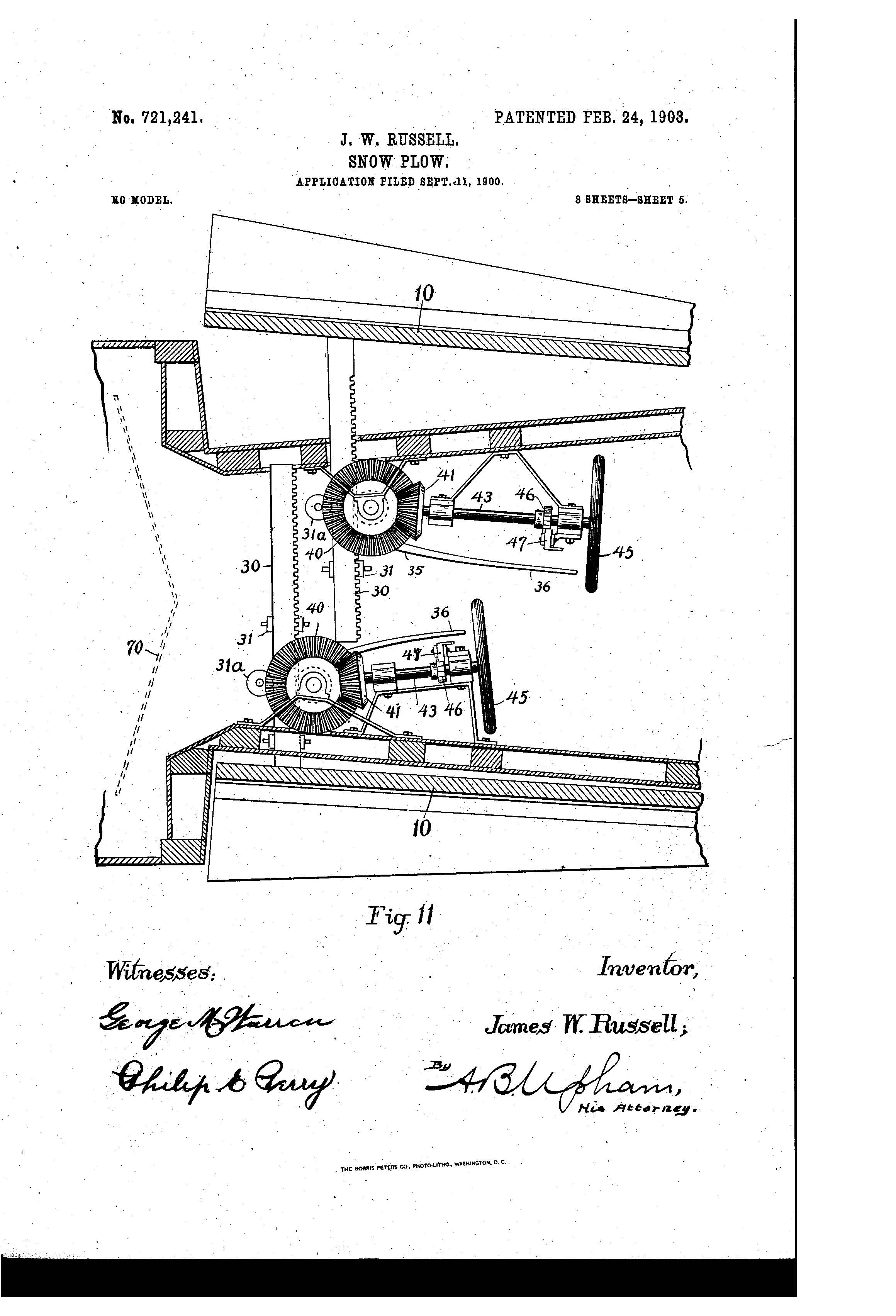
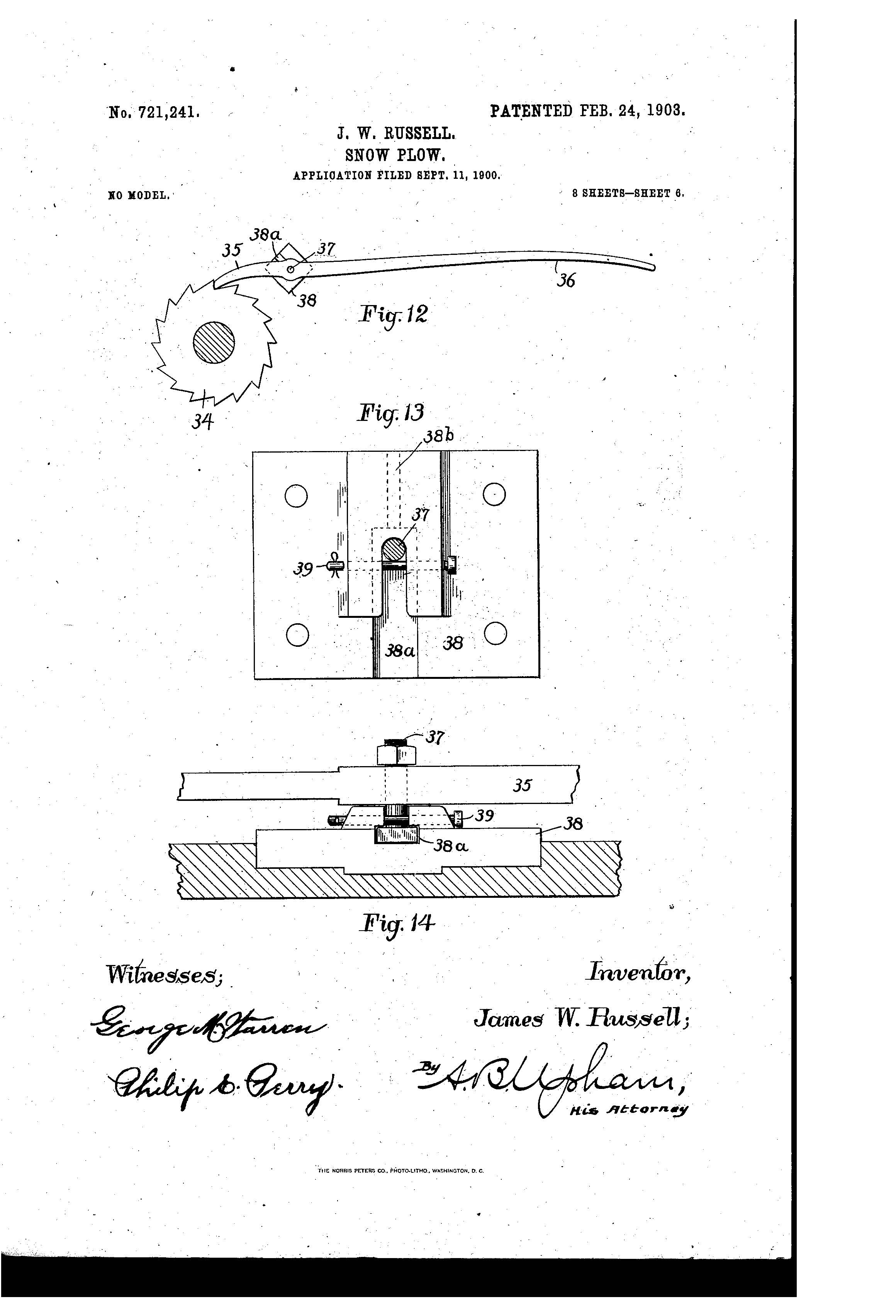
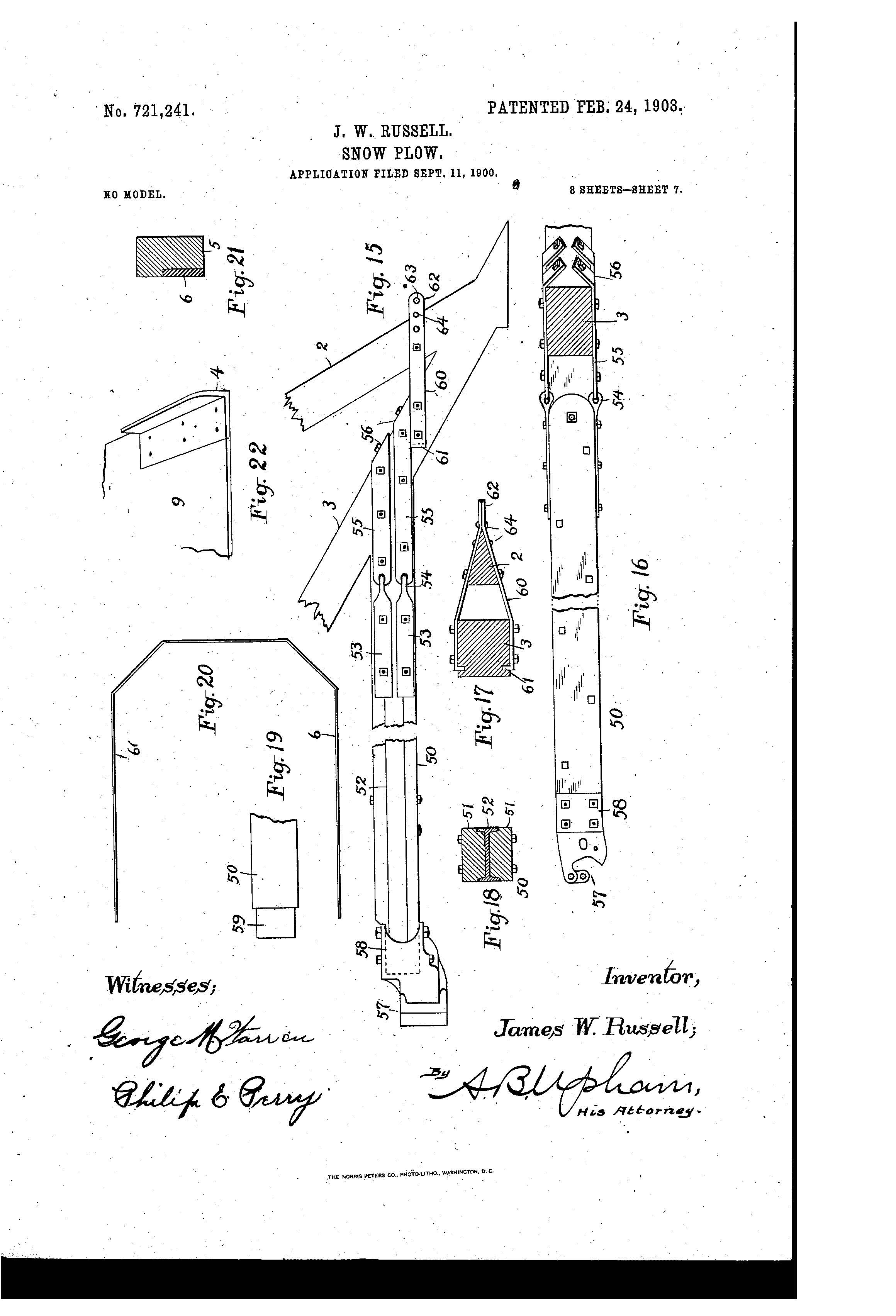
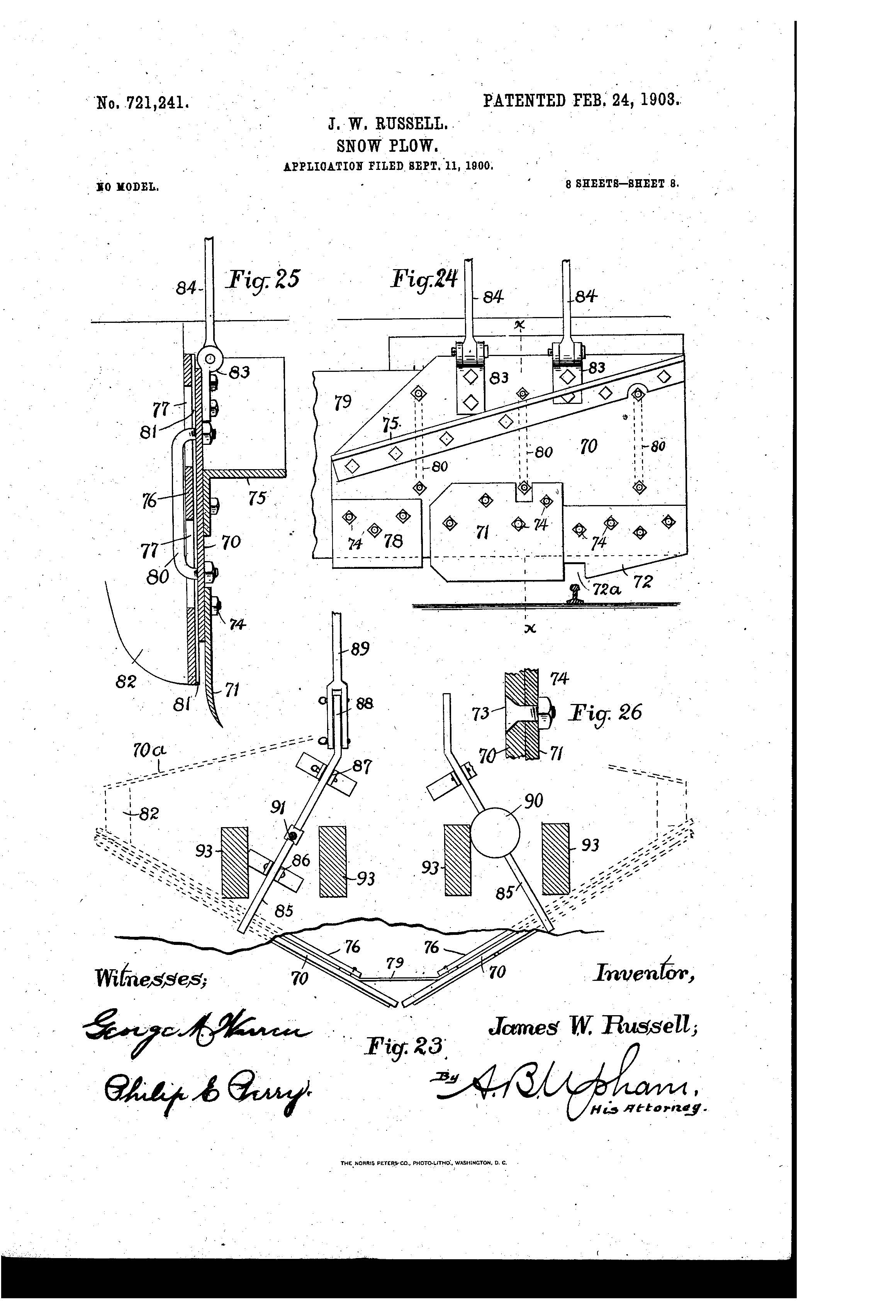
Patent of the Day: Manufacture of Electrical Condensers, Coils, and Other Devices
Suiter Swantz IP takes a look back at past inventions and inventors with our Patent Of The Day.
On this day in 1897, Nikola Tesla was granted U.S. Patent No. 577,671 for a MANUFACTURE OF ELECTRICAL CONDENSER, COILS AND OTHER DEVICES.
This invention is an improvement in the manufacture of electrical condensers, coils, and other devices. of a similar character in which conductors designed to form paths for currents of high potential are brought into close proximity with each other. Among such devices are included many forms of condensers, transformers, self-induction coils, rheostats, and the like.
It has heretofore been shown that the efficiency and practicability of such devices are very greatly enhanced by the exclusion of air or gas from the dielectric separating the conductors or remote portions of the same conductor; and the object of this present improvement is to secure such exclusion of air in as perfect a manner as possible in a convenient and practicable way. To this end place the condenser or other device to be treated in a receptacle from which the air maybe more or less perfectly exhausted, and while in Vacuum introduce an insulating substance, which liquefies when subjected to heat, such as paraffin, which surrounds the said device and finds its way into its interstices.
Suiter Swantz IP is a full-service intellectual property law firm serving all of Nebraska, Iowa and South Dakota. If you have any intellectual property questions or need assistance with any patent, trademark or copyright matters and would like to speak to one of our patent attorneys please feel free to contact us.
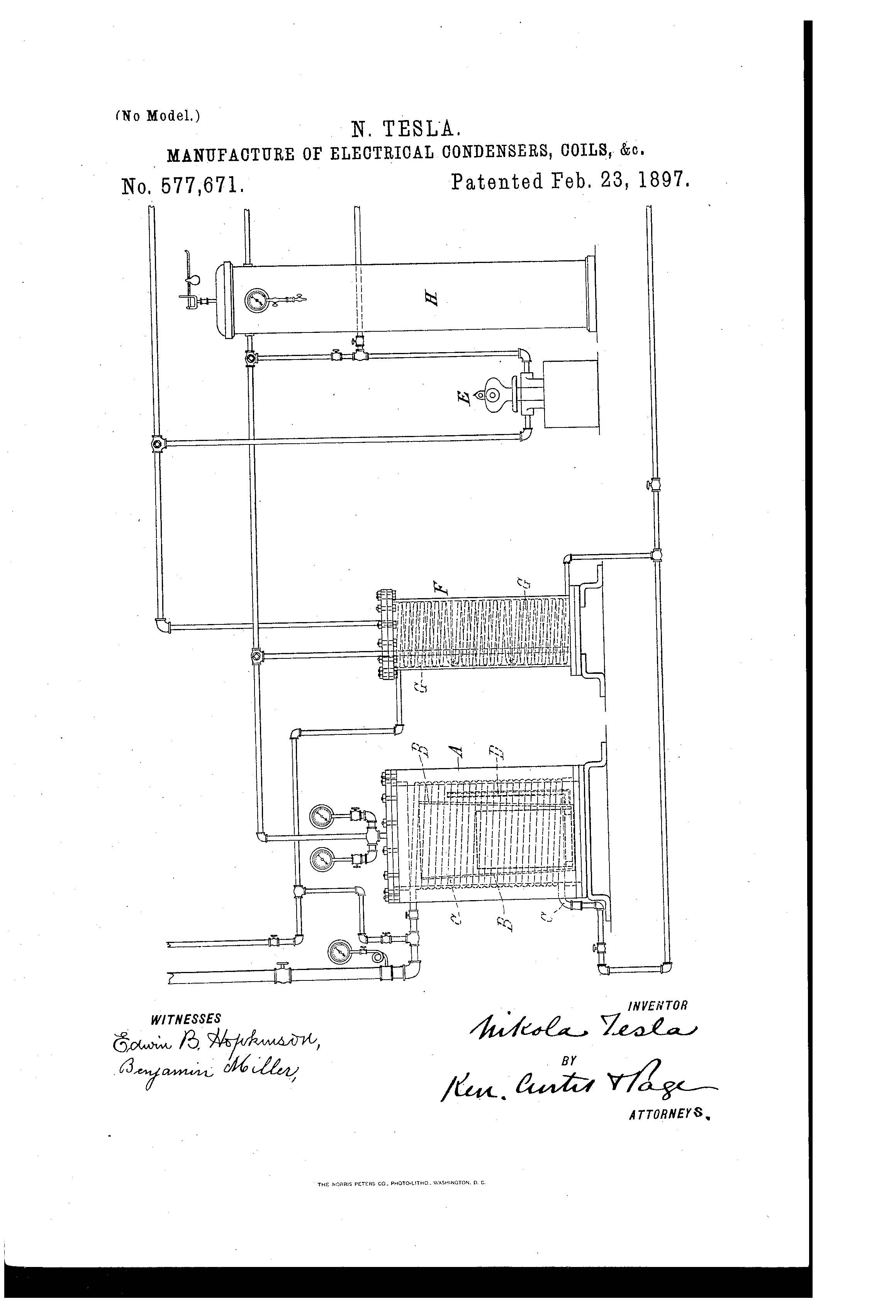
Hearing for 2017 NEB LB67, Adopt the Fair Repair Act
The hearing for 2017 NEB LB67, Adopt the Fair Repair Act, is scheduled for March 9th, 1:30 PM, in Room 1113 of the State Capitol in Lincoln, NE. Our Jon Horneber will be attending the hearing, where arguments will be presented regarding what “Rights to Repair” an individual possesses in purchased vehicles and consumer electronics.
To read more about the Right to Repair bill click here.
A direct link to Nebraska LB67: Adopt the Fair Repair Act may be found at http://nebraskalegislature.gov/FloorDocs/105/PDF/Intro/LB67.pdf.
Nebraska Legislature to Hear Right to Repair Bill
During the 2017 legislative session, Nebraska, Kansas, Minnesota, Massachusetts, New York, and Wyoming are holding hearings for newly-proposed bills concerning an individual’s “Right to Repair”. Right to Repair Bills first surfaced in the early 2000’s following the growing presence of computers and electronic components in automobiles (such as the On-board diagnostics (“OBD”) II port, federally mandated to be installed in all the 1996 and later model year vehicles). The original Right to Repair bills were drafted to provide independent repair shops with the same access as dealerships to the devices and tools necessary to fix computer and electronic component-based issues in automobiles. These bills were introduced in Connecticut, Illinois, Massachusetts, New Jersey, New York, Oklahoma, and Oregon, with Massachusetts adopting provisions in 2012 and 2013.
Since then, the subject matter in proposed Right to Repair bills has expanded to more sectors in the automobile industry (e.g. diagnostic and service manuals), but also to new industries such as the home appliance, tractor manufacturing, and consumer electronics industries. The expanded-subject Right to Repair bills focus on providing independent repair shops the same access rights as authorized retailers and repairers, but have been met with opposition. For example, Apple, Inc. has been a longstanding opponent of Right to Repair bills, which would potentially require the corporation to provide Apple product parts and diagnostic manuals to consumers and independent repair shops. The main focus of Apple, Inc.'s argument has traditionally been concerns about a lack of safety that may come with an untrained individual attempting to repair sensitive internal components.
John Deere, General Motors (“GM”), and other automotive companies (Original Equipment Manufacturer’s – “OEMs”) have also resisted the expanded-subject Right to Repair bills, but via a different route than appealing to concerns about a lack of safety. In early 2015, a group of OEMs (including John Deere annd GM) submitted an inquiry to the Copyright Office requesting a determination about what protections the Digital Millennium Copyright Act (“DMCA”) affords them. The submission for an inquiry focused on the idea that proprietary and copyrightable software code is now so integrated into modern tractors and cars that an individual purchases only an “implied license for the life of the vehicle to operate the vehicle” from the corporations, and not the actual vehicle1. The OEMs voiced concerns of copyright infringement, stating that “[a]llowing anyone to alter the software integrated into the machinery, even if only to perform repairs, would ‘make it possible for pirates, third-party developers, and less innovative competitors to free-ride off the creativity, unique expression and ingenuity of vehicle software.’ ”2 The only suitable alternative, according to the OEMs, was that the purchaser of the “implied license” should be required to service the vehicle at a certified dealership or repair shop, to ensure the proprietary software code is properly protected from infringement.
However, proponents of copyright reform such as the Electronic Frontier Foundation (“EFF”) and the Intellectual Property & Technology Law Clinic, as well as tens of thousands of consumers, sent comments to counter the 2015 inquiry3. In November of 2015, the Copyright Office issued exemptions to the DMCA which included “[c]omputer programs that are contained in and control the functioning of a motorized land vehicle such as a personal automobile, commercial motor vehicle or mechanized agricultural vehicle, … when circumvention is a necessary step undertaken by the authorized owner of the vehicle to allow the diagnosis, repair or lawful modification of a vehicle function, … provided, however, that such circumvention is initiated no earlier than 12 months after the effective date of this regulation.”4 With the enactment of these exemptions, proponents of copyright reform believed at least a partial victory for the Right to Repair had been won.”5
But why only a partial victory? While the exemptions to the DMCA for select automotive software appear to represent a positive step for an unhindered Right to Repair, the positive step is only temporary, with DMCA exemptions lasting only for a period of three years. Perhaps recognizing this, legislation is introduced every session in an attempt to more permanently protect an individual’s Right to Repair. In the case of state legislature-introduced bills, those introducing the new bills likely hope that passage will signal Congress to take initiative. If no changes are made to the applicable sections of copyright law before the three-year exemption period is up, however, the battle for an individual’s Right to Repair will begin again.
One such piece of new legislation is proposed Nebraska bill, LB67, submitted by Senator Lydia Brasch of the 16th Legislative District of Nebraska. LB67 follows 2015 NEB LB1072, and attempts to grant owners and independent repair shops the Right to Repair utside of OEM purview. Senator Brasch explained the intent behind LB67 to Popular Mechanics, stating that "[t]he primary impetus is that [Nebraska is] an agricultural state. One out of every four jobs is connected to agriculture. When you work in farming, you are tied to weather restrictions—planting, harvesting, all have to take place when the weather is holding. When [farmers] have an equipment breakdown, sometimes there's a waiting period to get repairs down. At the same time, you're chasing daylight, and you're helpless during that period of time to diagnose, to maintain, or to repair your own equipment as you had in the past. Farmers are falling behind waiting in the queue for someone to work on their equipment."6
LB67 would require OEMs to give independent repair providers or owners “diagnostic and repair documentation, including repair technical updates and updates and corrections to embedded software, for no charge or in the same manner as … available to its authorized repair provider”. (§ 3(1)(a)). Additionally, LB67 would require OEMs to allow for the purchase of “equipment, inclusive of any updates to the embedded software of the equipment”, provided the parts are still available to the OEM dealership or authorized repair shop. (§ 3(1)(b)). Further, LB67 would require OEMs to allow independent shops and owners to purchase “all diagnostic repair tools incorporating the same diagnostic, repair, and remote communications capabilities” provided to the OEM dealership or authorized repair shop. (§ 3(3)). LB67 also includes language designed to reduce the increased burden being an authorized repair shop provides, requiring an OEM to stop requiring authorized repair shops to purchase proprietary versions of documentation otherwise available to independent shops and owners in a standardized format. (§ 3(2)).
The hearing for LB67 is scheduled for March 9th, 2017, at 1:30 PM in the Room 1113 of the State Capitol in Lincoln, NE. Interestingly, one list of potential industry representatives attending the hearing includes representatives from Apple, Inc. and AT&T, who would likely again voice concerns about the lack of safety in independent repair shops working with sensitive internal components – a position that may have increased foothold, due in part to recent consumer electronics issues such as the Samsung Galaxy S7. While there is no current indication whether OEMs such as John Deere or representatives of the automotive industry will be making an appearance, an appearance by these OEMs would not be surprising, given the focus of LB67. As someone who works on his own vehicles with some frequency (even though only as a hobby), I know I am interested in the outcome of LB67, and plan on attending the hearing.
A direct link to Nebraska LB67: Adopt the Fair Repair Act may be found at http://nebraskalegislature.gov/FloorDocs/105/PDF/Intro/LB67.pdf.
Suiter Swantz IP is a full-service intellectual property law firm serving all of Nebraska, Iowa and South Dakota. If you have any intellectual property questions or need assistance with any patent, trademark or copyright matters and would like to speak to one of our patent attorneys please feel free to contact us.
1 Wiens, Kyle, We Can’t Let John Deere Destroy the Very Idea of Ownership, Wired, April 21, 2015, https://www.wired.com/2015/04/dmca-ownership-john-deere/.
2 Id.
3 Id.
4 Brachman, Steve, Copyright Office issues DMCA exemptions for automotive software, jailbreaking smart TVs, IP Watchdog, November 9, 2015, http://www.ipwatchdog.com/2015/11/09/copyright-office-dmca-exemptions-for-automotive-software-jailbreaking-smart-tvs/id=62834/.
5 Id.
6 Grossman, David, "Right to Repair" Is About a Whole Lot More Than iPhones, Popular Mechanics, February 16, 2017, http://www.popularmechanics.com/technology/infrastructure/a25246/right-to-repair-legislation-under-fire-in-nebraska/
Patent of the Day: School Building
Suiter Swantz IP takes a look back at past inventions and inventors with our Patent Of The Day.
On this day in 1887, James C. Stewart was granted U.S. Patent No. 358,083 for a SCHOOL BUILDING.
This building is shown as of the general form of a Greek cross with the entrances in the angles between the wings, and a combined hallway and play-room in the center, with stairways leading from the corners to the floors above and below. The cloak-rooms and small halls are arranged between the several stairways, and the chimneys and ventilating-pipes next to the central hall or play-room, while the school-rooms proper occupy the several wings. In one corner, which, where the building occupies a corner lot, will face the point which is the junction of the two streets, is the main entrance, and preferably a tower. The lower story of this tower constitutes simply a hallway leading from the street to the combined central hall and play-room. Its floor is lower than that of the central hall and the school-rooms, and a short flight of steps leads up to the level of said floors. This lower story of the tower is also somewhat lower than the main story of the building, and the landing which is formed on a level with the floor of the second story of the tower is, therefore, but little more than half-way to the main floor of the second story. By this arrangement of stairways the ascent of each flight of stairs is short and easy. The second story of this tower is arranged as a principal’s or superintendent’s room, and by its location midway between the upper and lower floors of the main building, the superintendent can, by standing at the door of his room, observe what is going on on both main floors of the building. The top of this room is also designed to be, made in the form of a dome of the heavenly bodies may be delineated hereon, or the ceiling may be formed into blackboard to permit such delineation, and thus the room may be profitably used in teaching astronomy. This room may also be connected directly with the chapel and high-school room by shortflights of stairs,
Suiter Swantz IP is a full-service intellectual property law firm serving all of Nebraska, Iowa and South Dakota. If you have any intellectual property questions or need assistance with any patent, trademark or copyright matters and would like to speak to one of our patent attorneys please feel free to contact us.
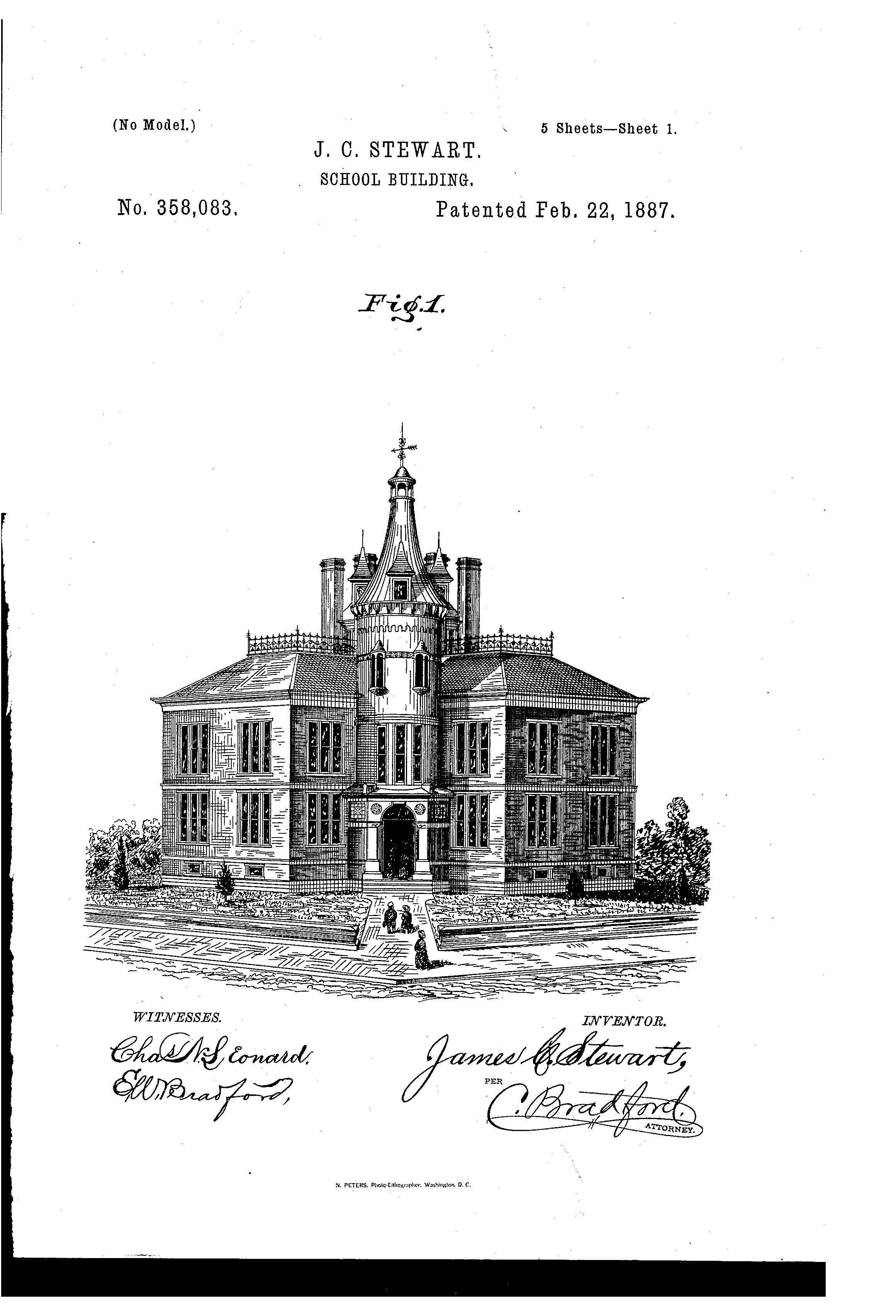
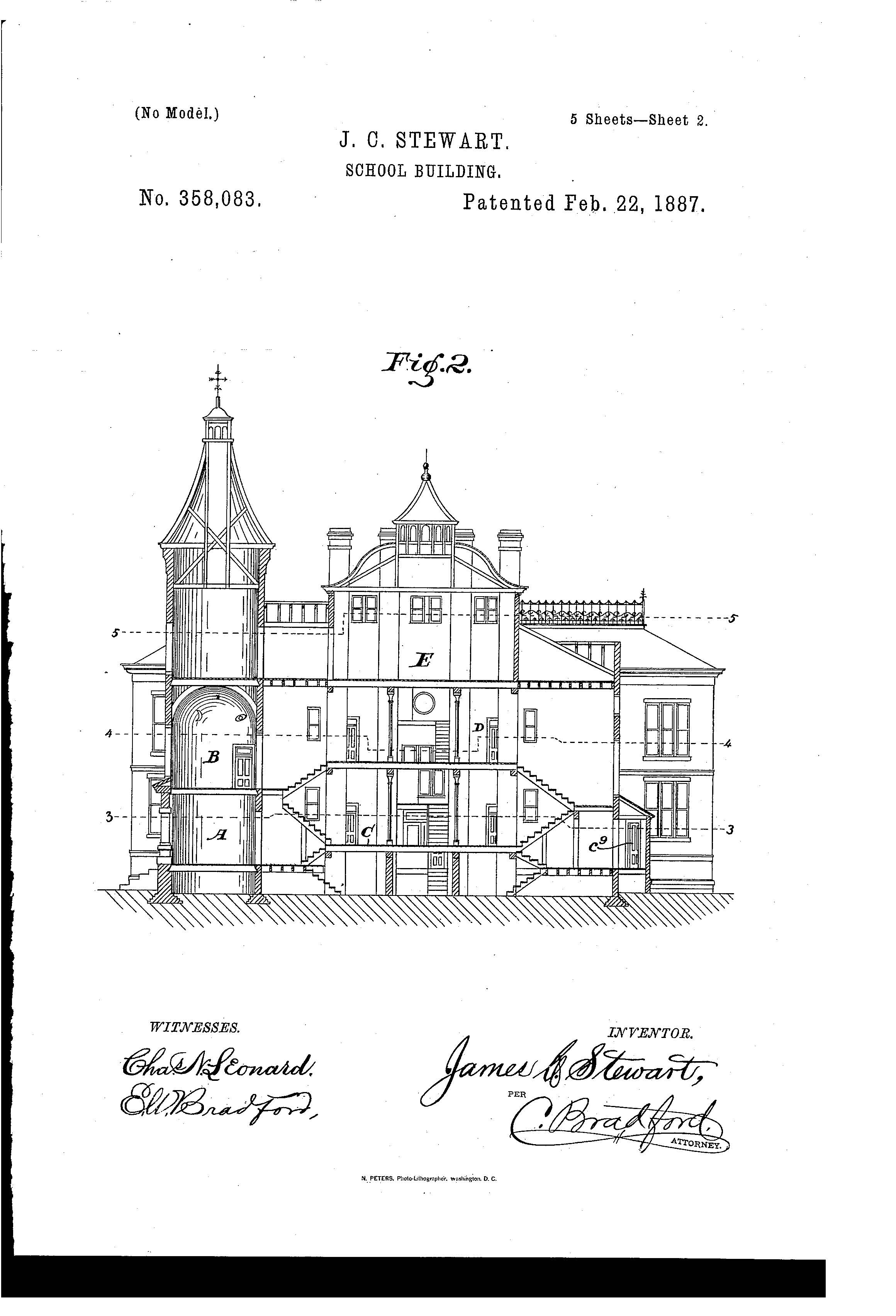
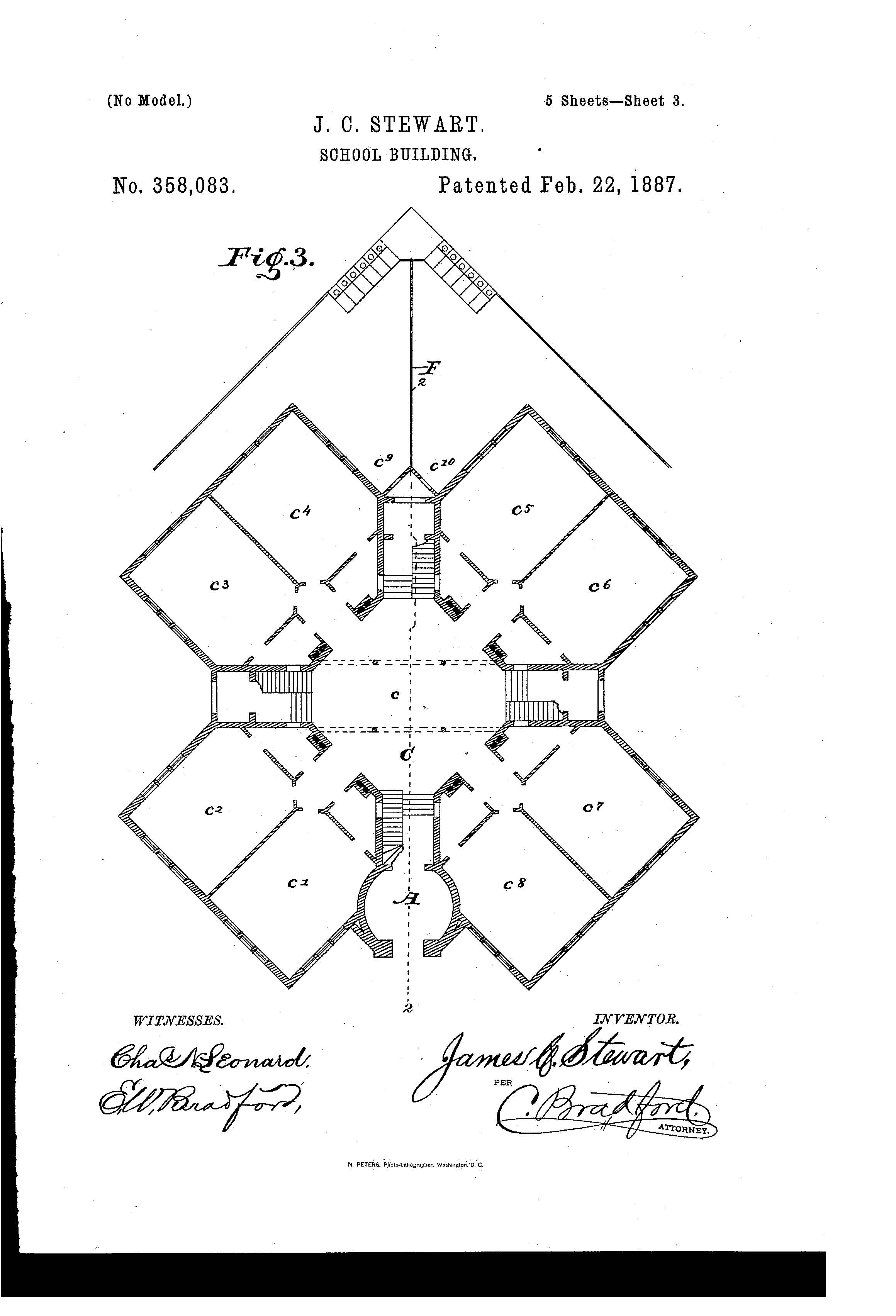
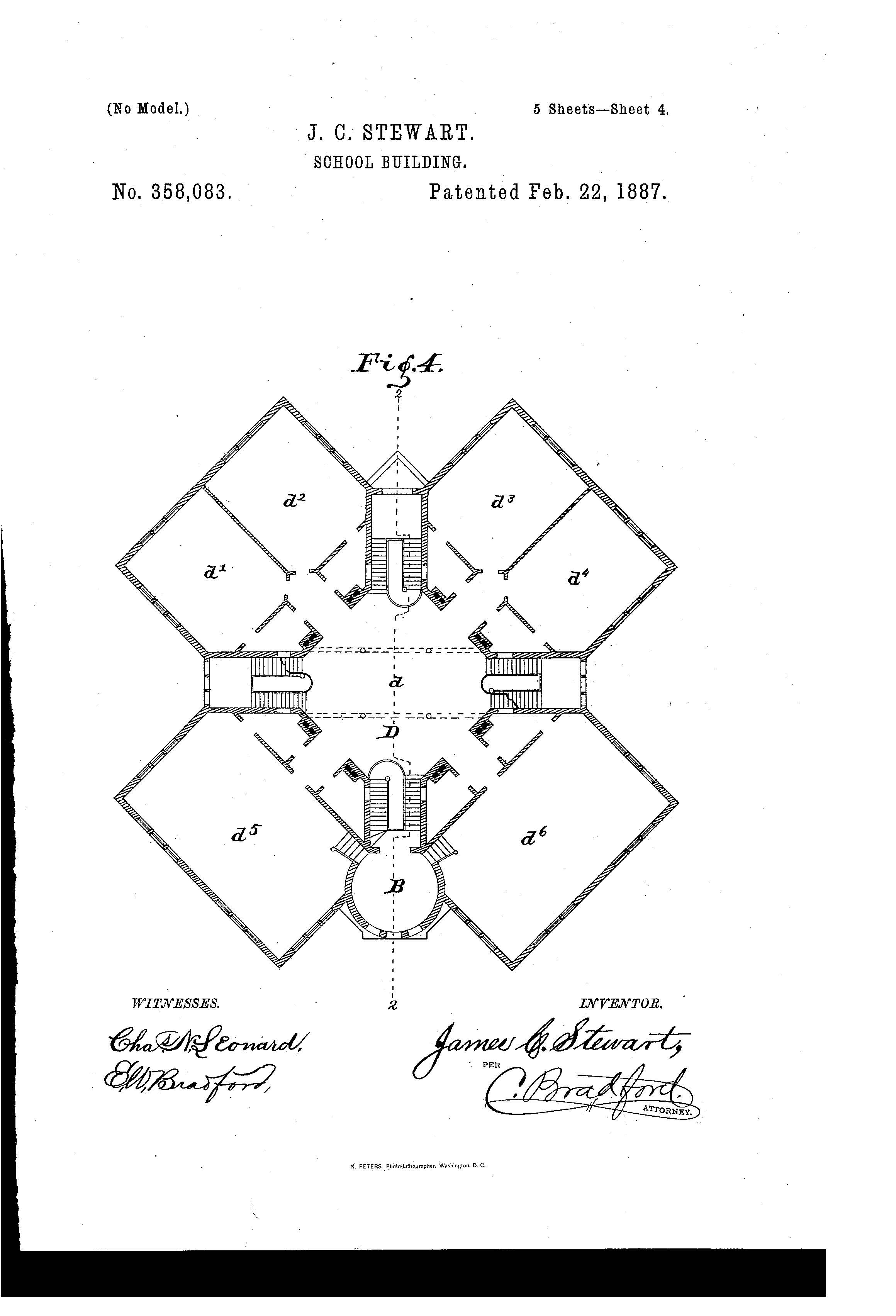
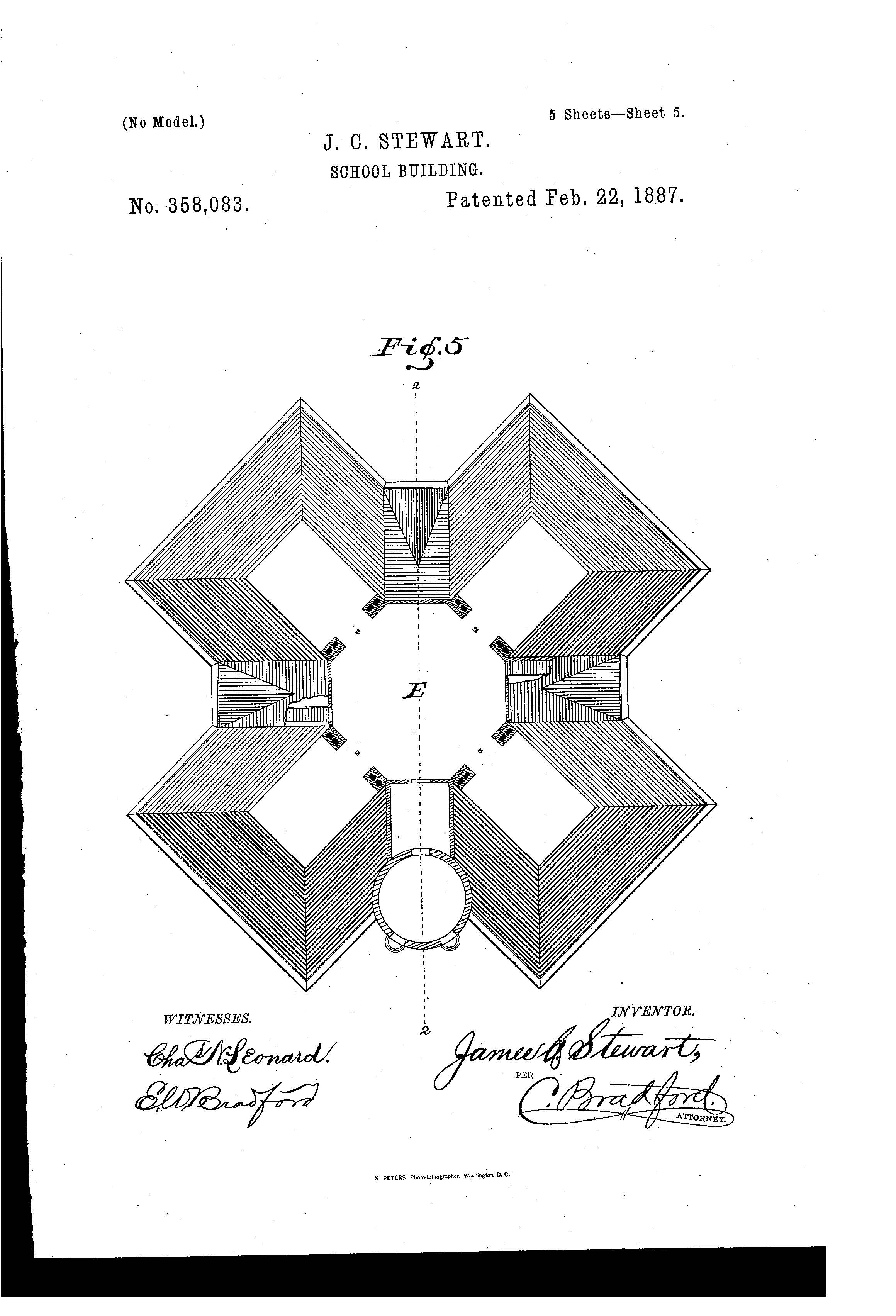
Lighthouses in the Fog: Navigating the Gray Areas of Subject Matter Eligibility Under 35 USC §101
Our own Eric Newhouse and Dallin call will be presenting this CLE on March 9th from 11 am to 12 pm at Creighton University School of Law OR via live webcast
Under 35 U.S.C. §101, patent eligible subject matter is defined as “any new and useful process, machine, manufacture, or composition of matter, or any new and useful improvement thereof.” Courts created exceptions to the literal scope of §101, further defining laws of nature, natural phenomena, and abstract ideas as ineligible subject matter. The recent Alice v. CLS Bank decision cast a murky fog over the “anything under the sun that is made by man” standard to which innovators and practitioners had grown accustomed.
While the Supreme Court and the Federal Circuit have avoided providing clear boundaries between eligibility and ineligibility under §101, cases such as McRO, Amdocs, DataTreasury, and Cellzdirect have cast rays of light that may help innovators and practitioners steer toward the realm of eligible subject matter in defining their inventions. In addition to discussing these cases, presenters Eric and Dallin will also discuss the following:
• Subject matter eligibility test under Mayo and Alice;
• Gray areas where the law and potential outcomes are still uncertain; and
• Practice tips for innovators and practitioners in software, data technology, and the life sciences.
To find out more and to register, visit http://www.nebar.com/events/EventDetails.aspx?id=931560&group.
GM and Honda Team Up to Manufacture Fuel Cells
Automaker giants General Motors (GM) and Honda Motor Co. announced that they will launch a joint venture called Fuel Cell Systems Manufacturing, LLC, one of the first plants to mass produce hydrogen fuel cells. The new company will operate out of the existing GM battery pack assembly plant in Bronstown, Michigan, which is located south of downtown Detroit. This $85 million investment will aid in the creation of up to 100 new jobs and will also focus on the development of new uses for fuel cell technology.
In addition to this joint venture, the two companies will also be combining their intellectual property portfolios on fuel cell battery technologies. These two companies hold two of the largest patent portfolios for fuel cells and related technology. Since 2002, GM and Honda obtained 918 and 757 U.S. Patents, respectively. In 2015 alone, GM received 87 fuel cell patents, and Honda received 57 fuel cell patents.
Toshiaki Mikoshiba is the chief operating officer of the North American Region for Honda Motor Co., Ltd. He is also President and CEO of American Honda Co., Inc. and Honda North America, Inc. Mikoshiba stated "[o]ver the past three years, engineers from Honda and GM have been working as one team with each company providing know-how from its unique expertise to create a compact and low-cost next-generation fuel cell system. This foundation of outstanding teamwork will now take us to the stage of joint mass production of a fuel cell system that will help each company create new value for our customers in fuel cell vehicles of the future."
Mark Reuss, GM Executive Vice President of the Global Product Development, Purchasing and Supply Chain said, "[t]he combination of two leaders in fuel cell innovation is an exciting development in bringing fuel cells closer to the mainstream of propulsion applications. The eventual deployment of this technology in passenger vehicles will create more differentiated and environmentally friendly transportation options for consumers."
In 1966, GM was the first to manufacture a hydrogen fuel cell electric vehicle (FCEV). The “Electrovan” was originally developed for the space program, and fifty years later, GM is still building on that innovation. It wasn’t until the 1990s, that the development of fuel cell vehicles began to increase in popularity.
Fuel cell technology provides various advantages over battery or fossil fuel-based power systems. The technology is thought to be a viable solution for transport vehicles where use of large batteries may cut into the vehicles’ payload capability. Further, fuel cell vehicles are designed to only emit water vapor, a much preferred emission compared to fossil fuel combustion byproducts that most vehicles currently emit today. Fuel cells can also be refueled in just a few minutes and are much more compact than a large standard car battery.
One problem that the two companies will need to take into consideration is the lack of hydrogen fueling stations. Currently, there are only 59 hydrogen fueling stations in the United States, and most of these can be found in California.
One of the goals the companies will strive for will be to reduce the cost of manufacturing and development through common sourcing. They will also work with the government and other stakeholders to advance the infrastructure that is vital for the long-term sustainability.
"With the next-generation fuel cell system, GM and Honda are making a dramatic step toward lower cost, higher-volume fuel cell systems. Precious metals have been reduced dramatically and a fully cross-functional team is developing advanced manufacturing processes simultaneously with advances in the design," said Charlie Freese, GM executive director of Global Fuel Cell Business. "The result is a lower-cost system that is a fraction of the size and mass."
Mass production of the fuel cells is slated to begin in 2020.
Suiter Swantz IP is a full-service intellectual property law firm serving all of Nebraska, Iowa and South Dakota. If you have any intellectual property questions or need assistance with any patent, trademark or copyright matters and would like to speak to one of our patent attorneys please feel free to contact us.
Patent of the Day: Trousers Presser
Suiter Swantz IP takes a look back at past inventions and inventors with our Patent Of The Day.
On this day in 1905, Augustus T. Knorzer was granted U.S. Patent No. 783,286 for a TROUSERS PRESSER.
This invention relates to means for pressing trousers, and has for its object to provide an improved device for the support of trousers when not in use and arranged to stretch and crease the same, and thereby maintain them in proper shape.
Another object of the invention is to facilitate the application and removal of the device and to permit of the same being folded into compact form for convenience in transportation and storage when not required for use.
It is furthermore designed to arrange the device so as to constitute a hanger for the trousers without taking up any more room than an ordinary pair of trousers in order that the device may be especially adapted for use in wardrobes, closets, and the like.
Suiter Swantz IP is a full-service intellectual property law firm serving all of Nebraska, Iowa and South Dakota. If you have any intellectual property questions or need assistance with any patent, trademark or copyright matters and would like to speak to one of our patent attorneys please feel free to contact us.
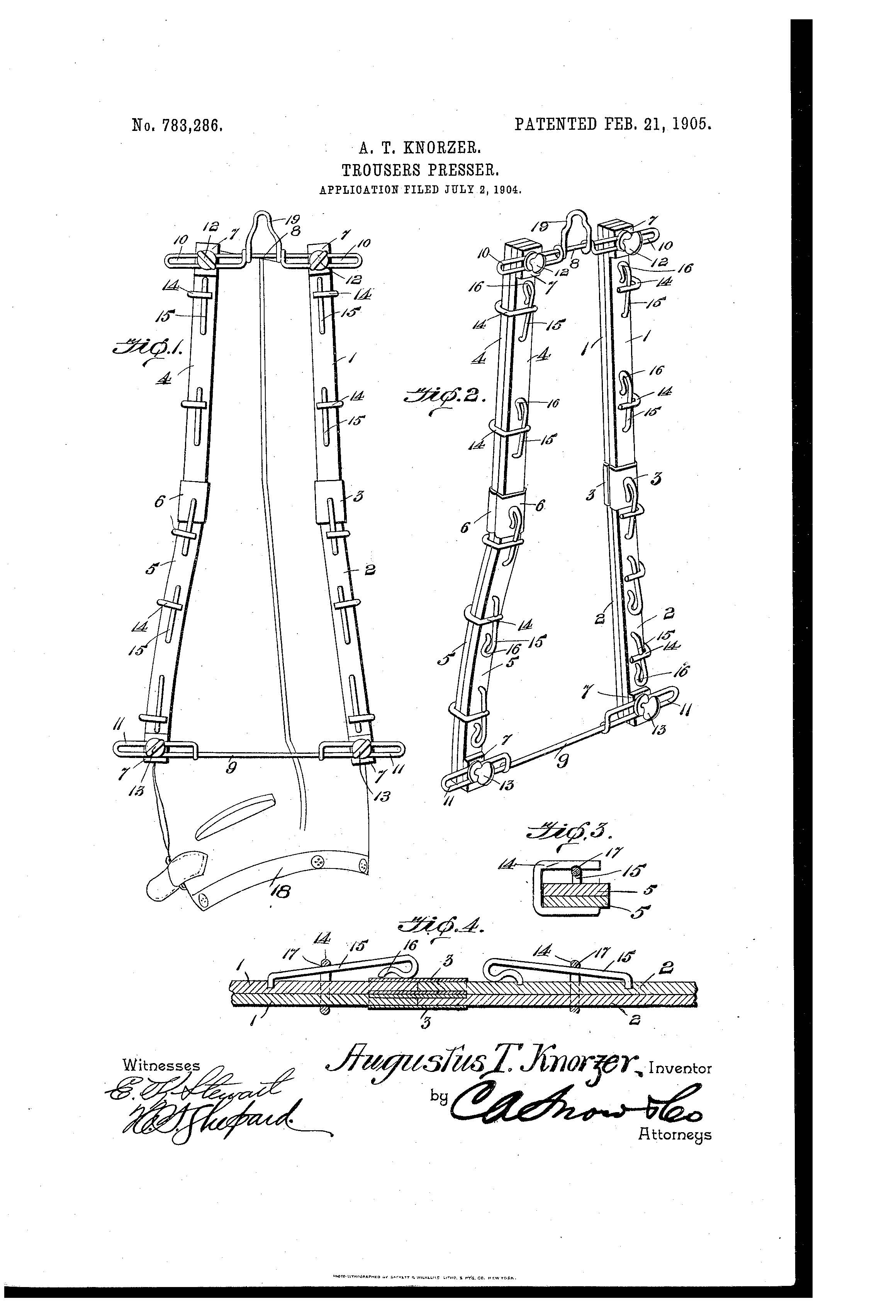
Patent of the Day: Camouflaging
Suiter Swantz IP takes a look back at past inventions and inventors with our Patent Of The Day.
On this day in 1939, McClelland Barclay was granted U.S. Patent No. 2,190,691 for a CAMOUFLAGING.
This invention relates to camouflaging and more particularly to a novel method of camouflaging whereby the actual size and shape of a moving body such as an aircraft is caused to become indistinguishable.
It is often highly desirable, particularly in warfare, to confuse an observer as to the size and shape of a moving body and thereby cause said observer to be deceived as to the speed and direction of travel of said body. For example, in aerial combat a definite advantage may be secured over an enemy plane if the pilot thereof can be confused for a few seconds as to the speed, course, size or type of an adversary. In addition, enemy ground defenses are rendered ineffectual against an aircraft when the latter is suitably camouflaged to cause an enemy enemy observer to misjudge the distance from the craft to the ground batteries, or the direction of travel of said craft relative to said batteries. Accordingly, one of the objects of the present invention is to provide a novel method whereby a craft, such as an airplane, has painted. or stencilled thereon a multiplicity of designs of such color and configuration as to secure a desired confusion in the eyes of an enemy observer.
Aircraft camouflaging was first seen in World War I, where it was used as an attempt to conceal the aircraft with colors similar to the background. The trend continued in World War II with spitfire planes using pink as their camouflage color. This color choice would make the plane almost invisible during sunrises and sunsets. The problem with pink was that in order to make sure the planes were rarely seen from above, they were to fly just under cloud cover which made pilots' jobs more difficult. Camouflaging continued and other countries caught on and decorated their aircraft with nose art. American Air Force pilots were unique in the fact they preferred pretty "pin-up" girls be painted on the sides of their planes. Planes still use camouflaging today, different hues of blues, greys, browns and greens are utilized but there are strict guidelines for the color choices.
Suiter Swantz IP is a full-service intellectual property law firm serving all of Nebraska, Iowa and South Dakota. If you have any intellectual property questions or need assistance with any patent, trademark or copyright matters and would like to speak to one of our patent attorneys please feel free to contact us.
